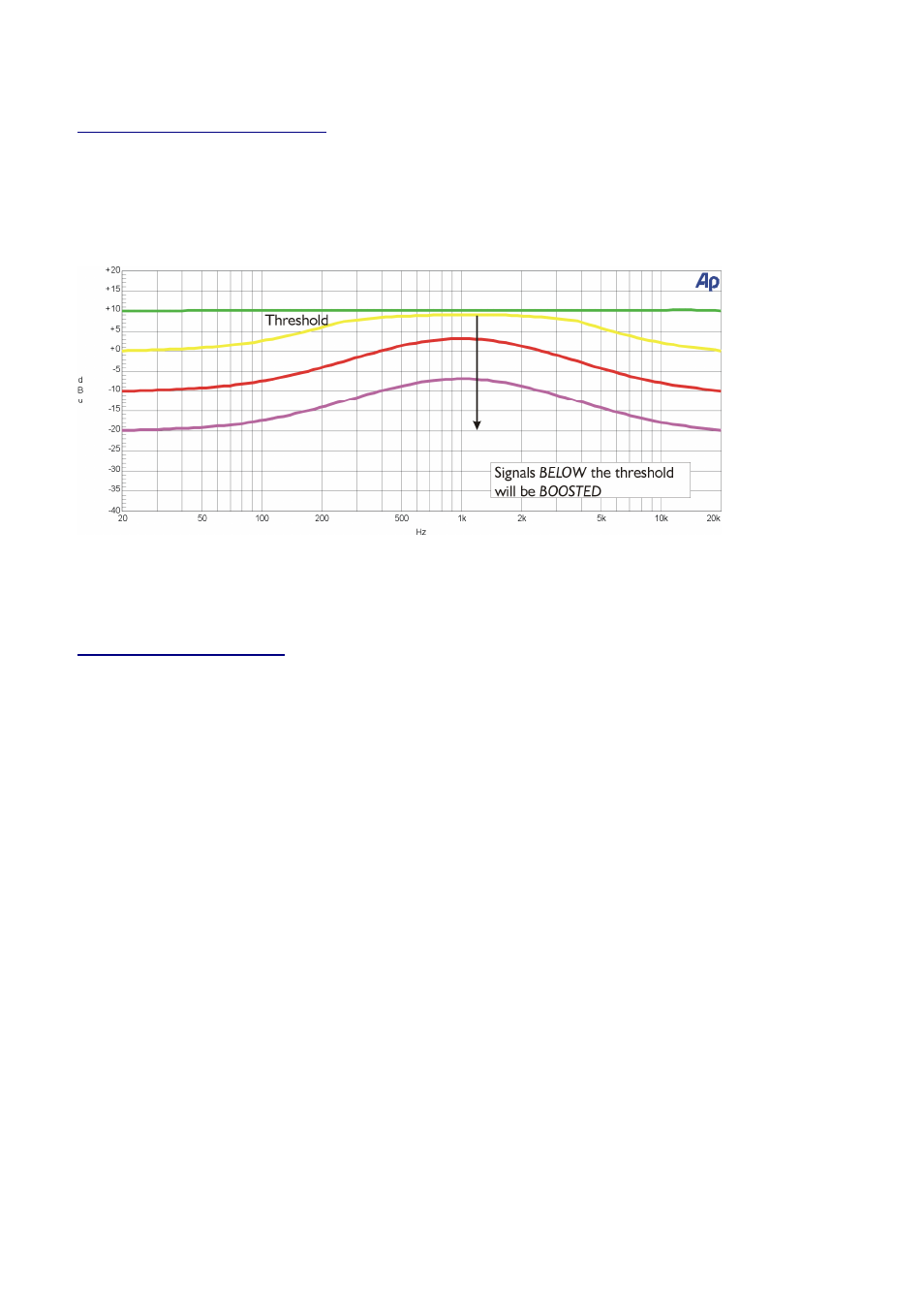Quadrant/mode iv: “boost below, Uses of “boost below” mode – XTA 5 Series User Manual
Page 47

✁
✂
✄
☎
✂
✆
✁
✂
✄
☎
✂
✆
✁
✂
✄
☎
✂
✆
✁
✂
✄
☎
✂
✆
Operator’s Manual
Page 47
Quadrant/Mode IV: “Boost Below”
This mode operates in a slightly unconventional manner insofar as behaving as an ‘upwards expander’, as opposed to the
more traditional ‘downwards expander’. What this means is that as the signal drops below the threshold, the selected
band of frequencies will be progressively boosted in relation to the rest of the spectrum, offering a perceived ‘lift’ in the
band. Consider the example below where the threshold is set to +10dB, and the selected frequency band is centred
around 1kHz, with a ‘Q’ of 1.0.
Signals above the threshold pass unaltered but, as the signal drops below the threshold, frequencies around the 1kHz
region will be progressively boosted (or expanded). How much boost is applied will depend on the ratio set and how far
below the threshold the signal actually is.
Uses of “Boost Below” mode.
One of the best uses of this mode is in the area of voice levelling and clarification. Placing the filter at about 700Hz (lower
to nearer 600Hz for men, up to 800Hz for women/children) with a wide ‘Q’ – typically 0.7, a ratio of 2:1, a maximum gain
of 12dB, attack 10mS and release 100mS. This will ensure that quiet talkers will have their vocal range boosted, without
bringing up system noise or microphone handling noise/room rumble.
